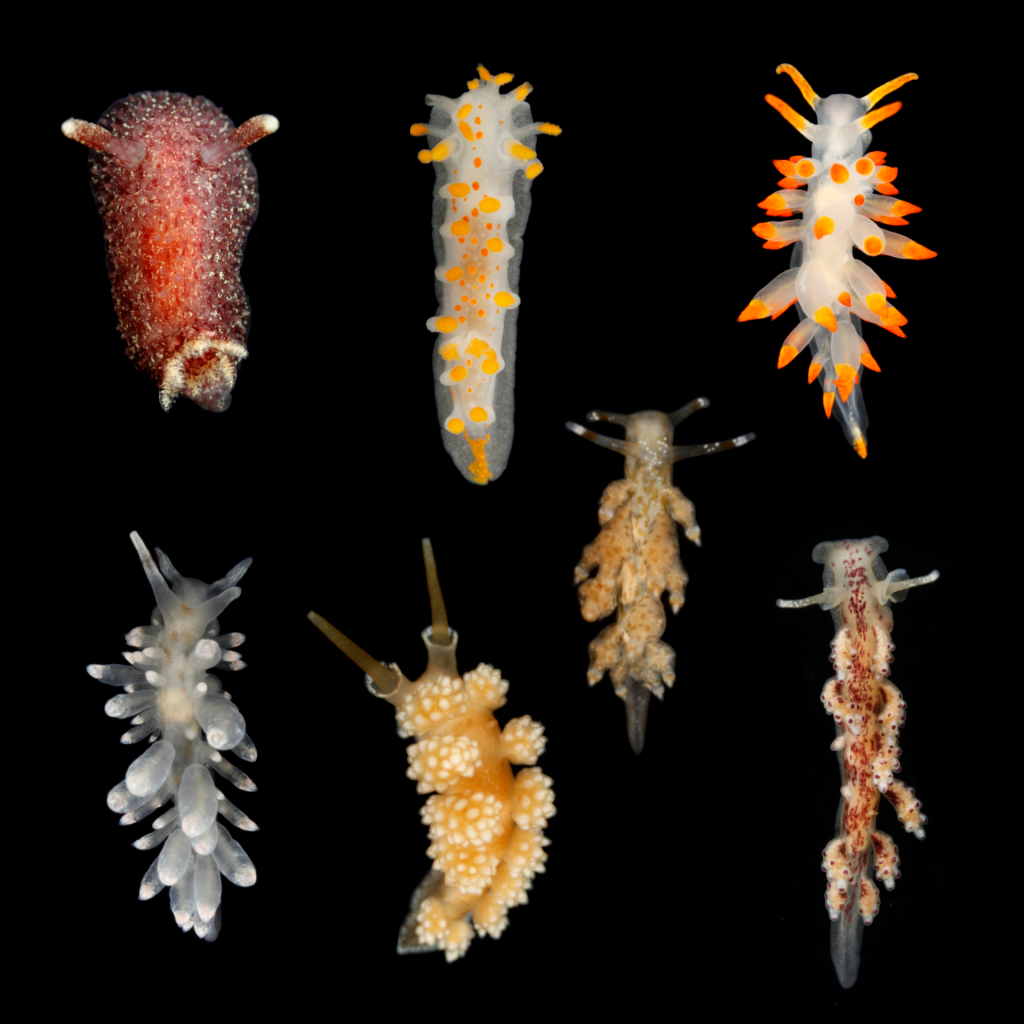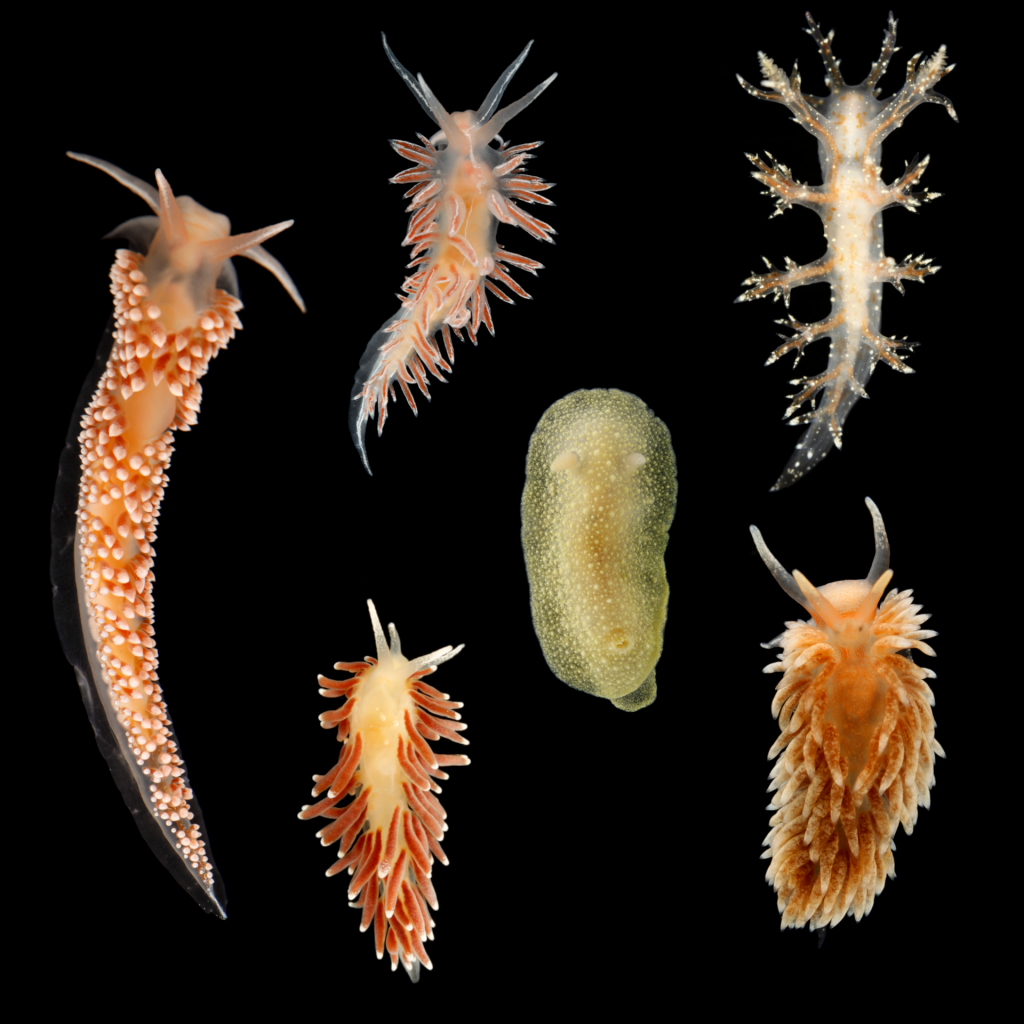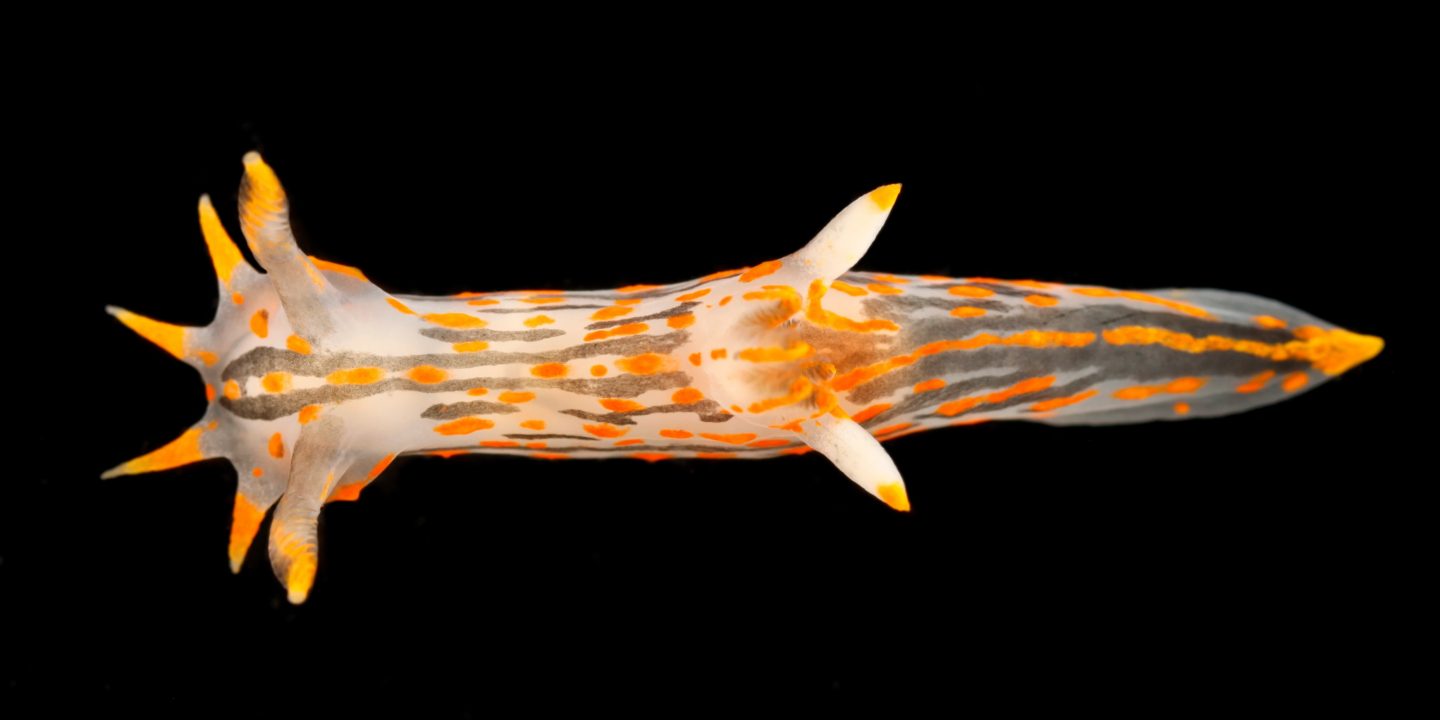This month, I would like to present something different from my usual worms: the nudibranchs (order nudibranchia), otherwise known as sea slugs. They are not an organism I have ever studied or worked with, but I encounter them regularly while looking for worms. And one thing I particularly enjoy about sea slugs is that, as their name indicates, they are quite slow. And this makes it really easy to take nice photographs of them!
In Norway, there are about 125 species of nudibranchs (and around 2500 worldwide). They live at depth from the coast to the deep sea. They enjoy areas with cold water and numerous currents, as it is where they find their food. So the Norwegian coast is perfect for them. Nudibranchs are mollusks and more precisely gastropods, so they are are related, among others, to land snails and slugs, although they are much more colourful than their terrestrial cousins. A picture is worth a thousand words, as you will soon see, but first here are a few more interesting facts about nudibranchs:
- Despite their lovely and cute appearance, nudibranchs are predators, feeding on bryozoans, hydroids, anemones, sponges, and even other nudibranchs.
- Nudibranchs are simultaneous hermaphrodites, meaning that all individuals are both male and female throughout their lives.
- In Norway, the place with the highest diversity of nudibranchs is the kelp forest.
- Most species of nudibranchs are short lived. Depending on their preferred food, many species live less than or up to a year, but some others can live up to two years or more.

A few small nudibranchs.

A few larger nudibranchs.
![]()
